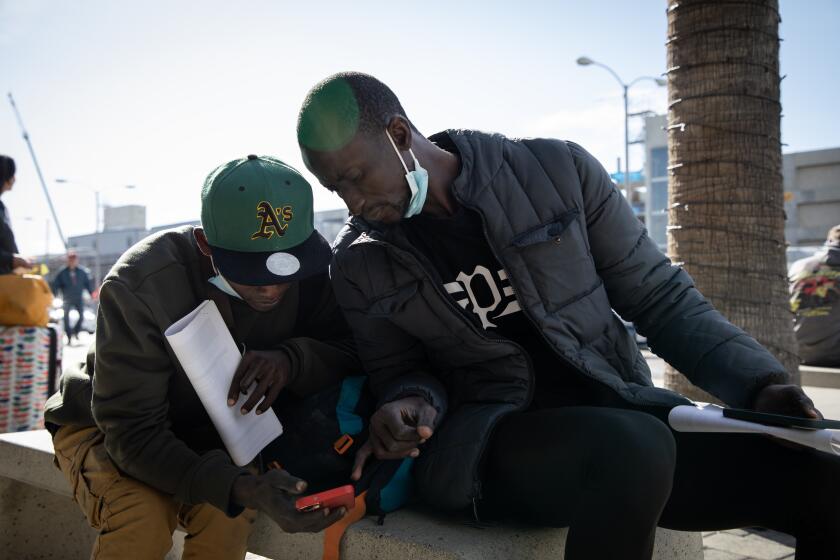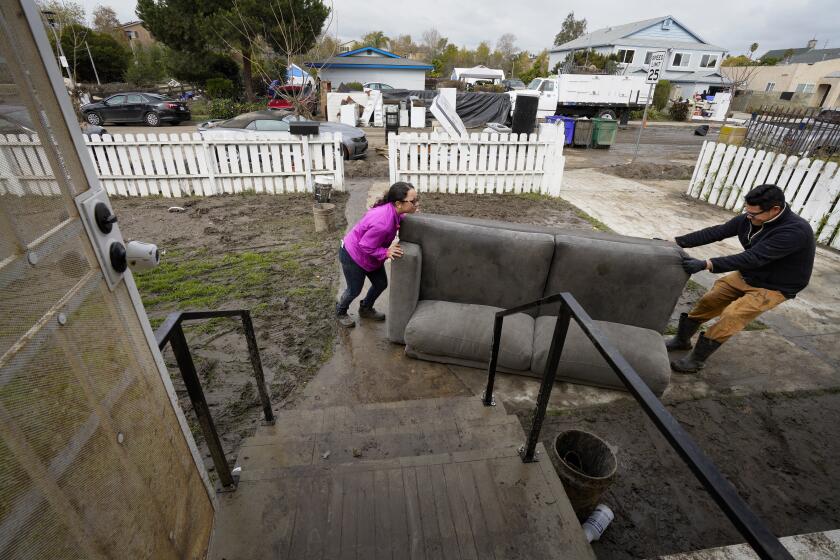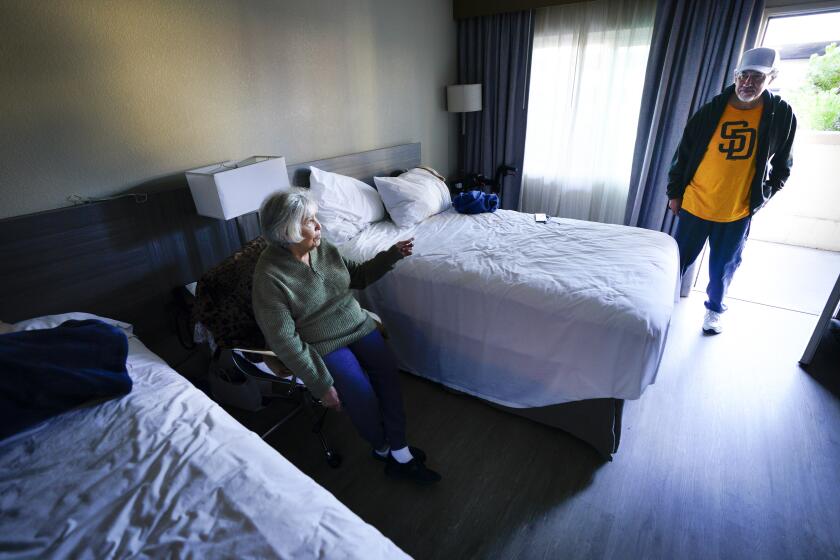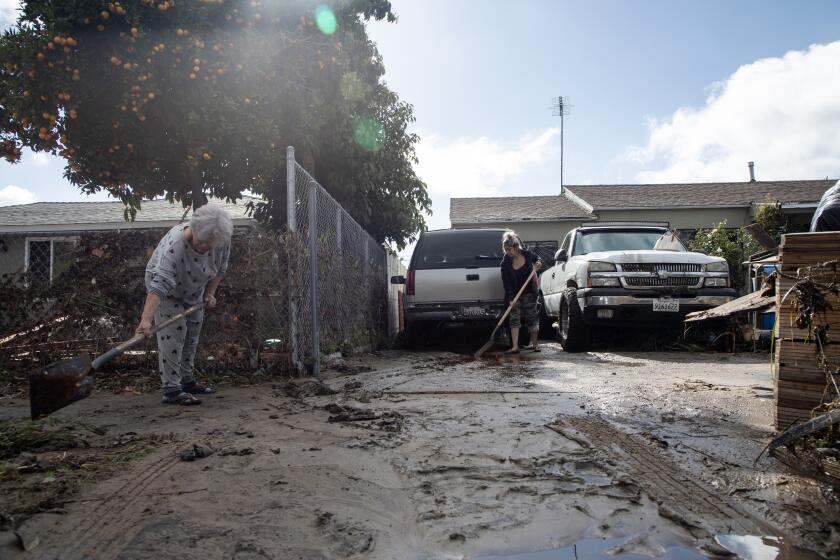Migrant services groups call on county for ‘seat at the table’ in deciding how to spend federal funds

The county has until Friday to submit its plan to FEMA to receive its $19.6 million allocation of federal funds for migrant services
Local migrant services groups are urging San Diego County leaders to collaborate with those working directly with migrants on the ground before deciding how to spend its recent $19.6 million allocation from the federal government.
The grant is part of the Federal Emergency Management Agency’s Shelter and Services Program, or SSP, which provides funds to non-federal entities that provide shelter and other eligible services to migrants.
Typically, SSP funds are allocated to entities in border communities that are doing the bulk of the work to provide assistance to asylum seekers locally. The funds aren’t provided upfront but are rather reimbursed to entities later.
But because the county doesn’t currently have its own shelter operations, it still needs to determine how it would spend its funding allocation. The county has until Friday to come up with a plan and submit its application to FEMA.
Migrant advocacy groups say the funds could not come at a better time, as the region has seen an increase in asylum seekers arriving at its southern border since last fall and local leaders have been calling for federal assistance to mitigate the release of migrants on local streets.
In the past month alone, 23,000 people seeking asylum were released onto San Diego County streets, according to advocacy organizations. About 99 percent of migrants spend only a short time in the county before moving on to their final destinations.
Now, as the county works to determine where the funds will go, nonprofits are asking to have a seat at the table and be a part of the solution.
“It is our expectation that we’re able to think through a regional plan that hopefully gets to a place of avoiding street releases,” said Kate Clark, senior director of immigration services for Jewish Family Service of San Diego, “but in order to do that, the organizations that are closest to the work really need to inform the county how they can put forth a plan to the federal government to use these funds.”
Catholic Charities in San Diego also received $19.6 million to provide shelter and other eligible services to migrants arriving in the region
In addition to the $19.6 million allocated to the county this fiscal year, Catholic Charities’ San Diego branch also received $19.6 million — which it will split equally with Jewish Family Service — for a total of $39.2 million to fund migrant services in the region.
County officials are not sure yet whether they’d use the funding to begin bringing to life a plan approved by the Board of Supervisors in February to open a permanent migrant center and shelter.
The California Welcoming Task Force — which includes local groups such as Immigrant Defenders Law Center, Al Otro Lado and Jewish Family Service — released a statement Monday, urging county leaders to collaborate with them, as they know the region’s most urgent needs and could ensure the funding goes where it can do the most good.
“Without these critical conversations, San Diego does not have a coordinated regional response,” the statement read.
County officials say they are currently working on a response and draft plan for the funding that they will submit.
However, that plan will not identify specific entities that will receive funding but be more general in nature, said Michael Workman, county spokesperson.
Community groups will have an opportunity to request funding at a later date before county supervisors ultimately decide how to allocate the funds at a future public meeting, Workman said.
The region as a whole is set to receive about $4.4 million more in SSP funds this fiscal year than last — in large part due to the county’s own allocation this year.
However, Catholic Charities and Jewish Family Service will each be receiving $7.6 million less than the total of nearly $35 million they split last fiscal year, a figure that included nearly $5.8 million allocated to Imperial County.
For the record:
7:08 p.m. April 26, 2024An earlier version of this story referred to the region as having been allocated $10 million more in funding through FEMA’s Shelter and Services Program this year than last. That figure did not include the nearly $5.8 million in funds allocated last year to Catholic Charities in Imperial County, a sum that was also evenly split with Jewish Family Service and used to service the entire California border region as a whole. Funding figures for this year include both counties combined.
Both organizations use those funds to operate respite shelters for asylum seekers, primarily those in vulnerable populations such as families with young children, pregnant women, and people who are sick or elderly.
But both say that those funds will not begin to cover all of the expenses that it takes to operate their shelters.
Since the county closed its temporary migrant welcome center — which operated on $6 million in county funds and served more than 81,000 individuals in the four months it was open — Catholic Charities and Jewish Family Service have tried filling the gap in services for as many asylum seekers as they can.
But migrant advocacy groups worry the loss of funds will hinder shelters’ existing infrastructure and lead to more street releases.
Vino Pajanor, CEO of Catholic Charities, says the shelter has been taking in 150 to 200 healthy individuals in addition to the 250 to 300 vulnerable people it receives daily since the temporary center shuttered.
“We are doing our best to reduce the number of individuals that are getting released on the streets of San Diego, but unfortunately we are at capacity,” Pajanor said.
The shelter operated by Jewish Family Service is the longest operating migrant respite shelter in the region and has helped 200,000 migrants since 2018, providing them with temporary shelter, meals and assistance with transportation to their final destination. But the shelter will be operating with a gap of about $11.8 million based on this year’s funding allocation, Clark said.
Others like Immigrant Defenders Law Center have been doing the work without any federal dollars.
The center has served nearly 34,000 asylum seekers in the last two months, staffing people at the airport and transit centers to help migrants reach their final destination, said Executive Director Lindsay Toczylowski.
“All of these things can be done, even when resources are finite ... so we’re hopeful still that the county will tap into the incredible ecosystem of organizations that we have built over decades,” she said.
Get Essential San Diego, weekday mornings
Get top headlines from the Union-Tribune in your inbox weekday mornings, including top news, local, sports, business, entertainment and opinion.
You may occasionally receive promotional content from the San Diego Union-Tribune.











